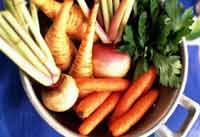| Quantity Control
Most people who have ever tried to lose weight are aware and conscious to avoid eating foods with more fat such as butter, ghee, deep fried foods, sweets and red meats. Over the years they develop a fair amount of self control when facing these foods. However as they keep resisting these foods they seem to gradually lose control or be lenient with themselves when it comes to controlling the quantity of the regular healthy foods that we all have to consume daily.
Therefore you may be 90kgs, not eating any fatty food and wondering why you are not able to reduce your weight. We need to understand that if a person is very lean and correct weight for his/her height they will have less fat mass in their body and more muscle mass or lean mass and therefore they will have a high body metabolism and they will be able to eat a larger quantity of food and burn it off and stay trim.
 Whereas if you are 10-20 kgs over weight you will have more fat mass and less muscle mass and therefore your metabolism will be low and you require much less food than a thin person and also less quantity compared to what you could have eaten when you were thinner. Age also plays a role, when you were 25 years old you may have eaten 3,4 or 5 roties in a meal and stayed thin . At age 45 you may need to eat only 2 roties in a meal to maintain your energy need and stay trim. Whereas if you are 10-20 kgs over weight you will have more fat mass and less muscle mass and therefore your metabolism will be low and you require much less food than a thin person and also less quantity compared to what you could have eaten when you were thinner. Age also plays a role, when you were 25 years old you may have eaten 3,4 or 5 roties in a meal and stayed thin . At age 45 you may need to eat only 2 roties in a meal to maintain your energy need and stay trim.
The first tip is that every person in every age group must eat 3 regular balanced meals daily. If you skip even one meal, please understand that your metabolism will go further down and your tendency to put on weight easily increases. Secondly if you miss meals be very sure you will develop the habit of over eating somewhere, sometime, somehow.
The next step is to figure out the quantities that work for you. Food is divided basically into carbohydrates and proteins. In a meal, bread, rice, roties, cereals, oats etc. are the main carbohydrate part and milk, eggs, dals, pulses and non-veg foods are the protein part. Besides this we have cooked veggies, raw fruits and salads.
When measuring carbs it must be measured as slices of bread or roties, one level standard measuring cup(1 cup equals 225ml) of cornflakes or cooked rice or cooked broken wheat or kichidi. Oats or ragi may be measured by heaped table spoons. 2 heaped table spoons of raw oats or ragi can be cooked into porridge with water to equal 2 slices of bread. To this you may add milk. Most people need to eat either 2-3 slices bread or 2-3 roties in one meal. We never advice eating only one slice bread on one roti in a meal. Corn flakes or rice is usually one cup to maximum one and a half cups at one meal. Just half a cup of cereal alone or half a cup of rice alone is not advisable.
When considering cooked dhal, chole, rajma, etc or cooked sabji please note that these should never ever exceed one level measuring cup of 225ml at any meal. I have observed that many may eat only one roti but eat 2-3 cups cooked sabji or cooked dhal or chole with it. These items contain calories and oil used for seasoning so you may either put on weight or not reduce at all.
Many are used to the habit of over eating and find this control very difficult. Here comes the role of skimmed milk, curd, fruits and raw salads. If you drink a glass of skimmed milk with your breakfast daily, you won’t over eat. Try to have a fruit at 11am or 12 so you are not too hungry before lunch. Similarly a fruit at 6 or 7 pm is advisable before dinner. Also a raw salad with both lunch and dinner is the best way to control the quantity of cooked food in these meals. Curds/buttermilk too may be added to lunch and dinner.
|